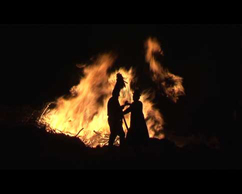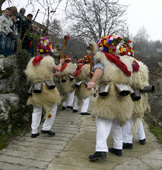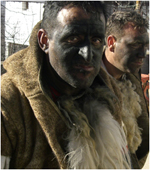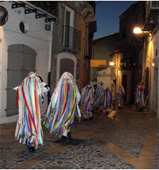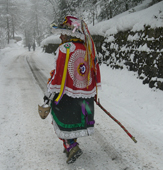CARNIVAL KING OF EUROPE - What is this site
Carnival King of Europe is a research project funded by the Culture Department of the European Union. |
This is the project's official website and it aims at bringing together:
• a new perspective on Carnival as a discrete European cultural phenomenon,
• resources on Carnival studies, insofar as books, films, links, events are concerned,
• facts & events about the project's progress.
In short, this is our case. A number of very specific ethnographic instances from the Balkans to Iberia, passing through Central Europe, the Alps and the whole of the Italian peninsula, put in evidence some striking similarities in the winter masquerades which are meant to foster the onset of the new agrarian year.
Among these, there are the sudden appearance of stocky masked mummers girdled by cowbells, often followed by slender white dancers wearing tall conical caps, the representation of a mock nuptial cortege in conjunction with the ritual ploughing of the village square, the invasion of a crowd of assorted burlesque characters, and finally, the trial and sentencing to death of a pivotal figure, often identified with “Carnival” itself...
At present, no single, synthetic explanation is given by ethnologists and/or culture historians as to the widespread diffusion of such occurrences all over the continent. Yet, all available evidence seems to point at the fact this particular set of rituals can be situated very close to the core of European culture, at least as far as its original agrarian setting is concerned.
In this restricted, paradoxical sense, “Carnival” can be taken to be one of the longest standing “kings of Europe”, one in which European cultural identity can mirror and recognize itself.








